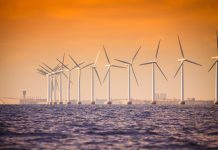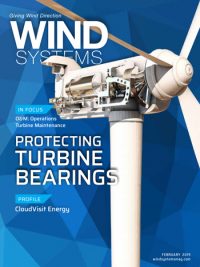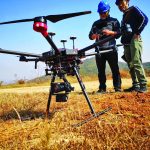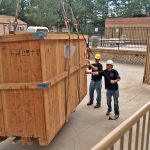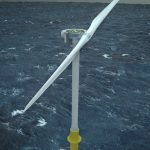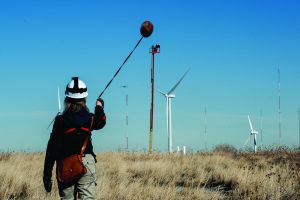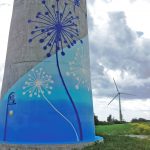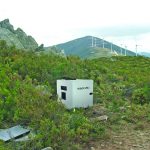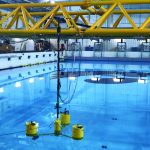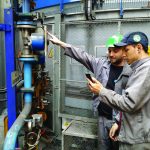Whenever big mechanical systems are constructed, there’s always a risk that it might interfere with wildlife. That is often the nature of progress.
Massive wind turbines sometimes conflict with birds, but they also can conflict with bats as well.
A recent study by the Canadian Wind Energy Association, DNV GL and Natural Resource Solutions, Inc. has put together a comprehensive resource with respect to wind energy and bat conservation. The study, Wind Energy and Bat Conservation – A Review by the Canadian Wind Energy Association, took three years to compile and draws upon an expansive treatment of subjects that include the effectiveness of bat-impact avoidance and minimization measures, wind facility siting considerations, post-construction monitoring, emerging technologies, and potential mitigation options.
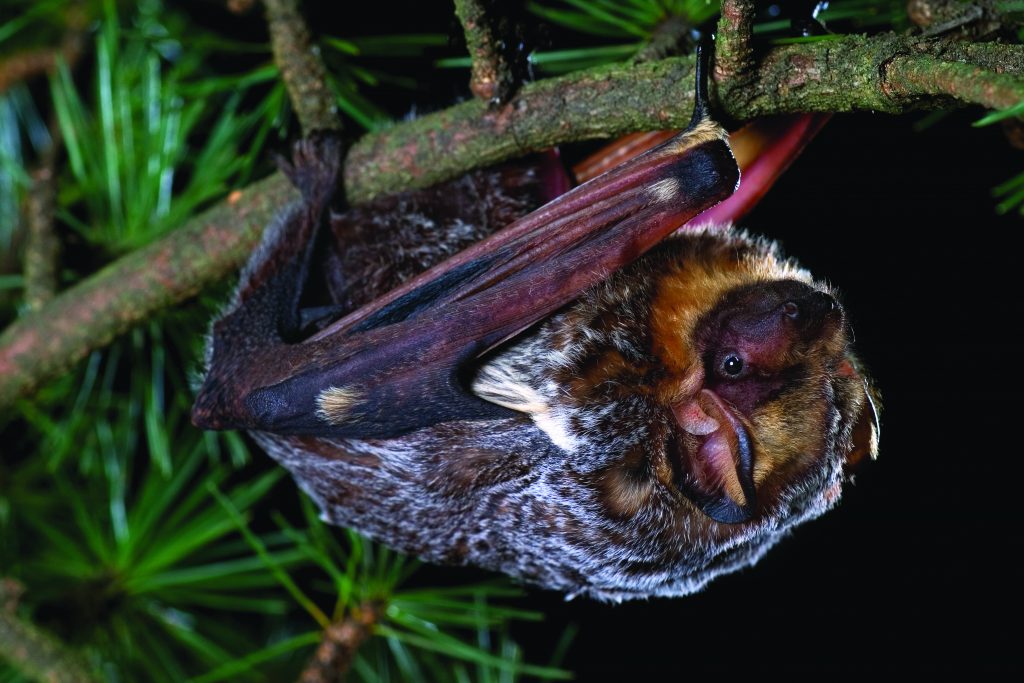
And although various aspects of a wind farm have the potential to affect bats, the operational phase receives the most attention in the report, according to Dr. Kimberly Peters, senior biologist for environmental and permitting services with DNV GL.
“I think in terms of potential negative effects on bats, operational fatality rates are the main concern, and so even during the siting phase, what developers will be looking for are to make smart siting decisions and to minimize any attractants,” she said. “Bats, for instance, are attracted to water, so the aim is to not create any unnecessary water sources. Also, not to place turbines near structures like hibernacula where bats congregate, but the real potential effects are going to occur during the operational phase — while turbines are actually spinning. That is when we tend to see fatalities, particularly during migrations, so we primarily focused on migratory bats.”
The review also highlights the positive role that the wind industry can play when it comes to bat conservation, and how, through participating in bat research and large-scale bat conservation efforts, for instance, the industry can help sustain bat populations over the long term in Canada. At the same time, wind energy represents a renewable energy source that will ultimately reduce the country’s reliance on fossil fuels and stem expected climate-change impacts to bats, humans, and other wildlife.
Communication tool
The point of the study is to use it as a communication tool between developers, regulators, conservation organizations, and other stakeholders in the public in order to add transparency and come up with the best, science-based solutions, according to Peters.
“For every decision that’s made, the decision makers can say, ‘OK, here was the set of facts we were working from. These are the predictions we made. There’s always going to be uncertainty, but based on those predictions, this is why we made that decision,’” she said. “For anybody who may disagree with a particular approach, the science will be right there for them. They may say, ‘well, we would have made a different decision,’ but at least everybody’s working from the same set of facts. I think one of the most helpful things to come out of this three-year effort was the science-based decision framework that we developed, which can be used by developers, conservationists, and regulators alike.”
Looking at siting issues is important, but Peters added that the science about siting and bats is still limited.
“We tend to recommend that micro-siting decisions be made with bats in mind, but I’m going to caveat that with there’s not a lot of definitive science that shows what kinds of micro-siting decisions have a real effect on what happens during the operational phase,” she said.
General decisions based on what’s known about bat biology can be used, but there are few studies that have actually examined the location of turbines in relation to where bats hibernate and what that specific outcome on bat populations may be, according to Peters.
Accounting for dynamics
But the extensive study takes into account many different dynamics that are happening.
“There are hypotheses that bats may actually be attracted to wind turbines, and so there’s been some concern,” she said. “If they are attracted, are they attracted by the turbine surface itself? Are insects attracted by the lighting, which in turn could attract bats? There’s still a lot of uncertainty there, but what we do know is that many species of bats in North America are experiencing very steep declines, primarily from things like disease and potentially things like pesticides that are taking away their prey base. They have also, as you know, been found as fatalities at wind farms. The industry is really interested in getting a better understanding of where they fall in terms of pressures on the bats and where they can help. That was where we were coming from in initiating this.”
Different species of bats behave differently, and this study has taken various bat species into account as the researchers gathered their data, according to Peters. The study tends to focus on migratory tree bats.
“Those are bats that don’t tend to congregate in big groups in caves, the way most people envision them,” she said. “They tend to breed and roost in treed areas, then they migrate. They’re going from Canada down into their wintering grounds, which are mainly in the U.S. and Mexico. Those are the ones that we find most often when we’re doing fatality searches under turbines, but the good news is those are not the bats that are getting hit really bad by disease. There’s a highly fatal disease known as white-nose syndrome that has really knocked back many of Canada’s and the U.S.’s species of cave-roosting bats. Those are the species that fortunately are not often found as fatalities at wind farms.”
Different frequencies
Another way the experts group bats is by their frequencies, according to Peters.
“Some species of bats are more likely to respond to something like an acoustic deterrent, whereas others that communicate and hunt and navigate at different frequencies may not respond as much,” she said. “I think as we move forward and we’re thinking about different kinds of technology and emerging technologies in particular, we need to understand that some are going to be more effective for one species than another. That’s why it’s really important for developers to understand what the potential bat species at their particular project are going to be, so they can think about adopting the correct kinds of technology or other measures that are going to be more effective.”
The way the industry currently assesses what the effects of a turbine or mitigating technology are is to determine how many bats are killed, according to Peters.
“The main way that you determine what your potential impacts are is by counting dead things, or lack thereof, under turbines,” she said. “That’s the question most want to get to. You can do other kinds of studies to see if there are any behavioral differences or if fewer bats are in the area, but primarily when you’re looking at the project itself, you want to know if you’re causing any bat fatalities and what species they are. There’s a burgeoning science behind the various methodologies for estimating how many bats were actually killed. You have searchers going out once every three days or once every week or month, and they’re obviously not going to find everything. There are different models that will adjust for what are known as detection biases, so you look at things like observer detection rate. How well are they seeing the bats? Are they passing by some that they’re missing?”
In addition, most models take into consideration scavenger removal, according to Peters, which essentially means that some dead bats may end up as dinner before they can be counted.
“It gets really complex because things can change over time, for instance some carcasses become less palatable if they sit out there longer, and so these models are quite sophisticated and take many factors into account,” she said.
Additional search parameters that can vary include the search duration, the size of the area searched, and the difficulty of the terrain around the turbines, according to Peters. Other considerations are carcass distributions around the turbines and where they end up after the initial impact with a turbine.
“All those things are taken into account through modeling, so it’s really quite interesting,” she said. “You can get a better understanding of seasonal differences and spatial differences and all kinds of neat things.”
Wind energy in context
As far as where turbines fall regarding their danger to bats, it is really minimal comparatively for most species, according to Peters.
“We think it’s much lower than several other pressures; I’m an ecologist, and we speak in things in terms of pressures,” she said. “What pressures are these species facing, at a population level? For several species, No. 1, no question, is going to be white-nose syndrome.”
But there is more information coming out in terms of environmental contaminants such as pesticides, according to Peters. Those environmental factors may not affect bats directly, but they could have an indirect impact.
“They certainly affect their prey base,” she said. “There have been some severe drops in flying insect populations, all over the world really, that we’ve seen recently. They’re just sort of disappearing, and the main culprit appears to be pesticides, compounded with things like deforestation and other kinds of human developments that take away their habitats.”
Climate change
Climate change is also likely to have a much bigger impact on bats than turbines ever could, according to Peters.
“There are going to be definite impacts from climate change,” she said. “It’s on target to be one of the main pressures on bats. It’s going to do things like increase the spread of disease. It’s going to heat up their hibernacula. I’ll get technical here for a second: Bats need to hibernate. Several species of bats need to hibernate through the winter, and so they’re all clustered in these caves, and they slow down their systems, so they’re not wasting energy, but if it warms up in those hibernacula, they’ll wake up, and they start burning calories and may starve to death depending on how many times they do wake up.”
And when the bats do emerge from hibernation, they may not have enough food to eat, according to Peters.
“We call it decoupling, which means that when a species like a bat most needs its prey, it’s not available because the triggers on the timing are not lined up anymore,” she said. “Insects tend to emerge based on ambient temperatures, so if insects are emerging too early, they won’t be available when bats most need them, like when they have pups and are nursing; these things take extra energy. Again, that’s going to cause population decline. I would call several things out as more impactful than wind turbines, including disease, contaminants, habitat loss, and climate change. But collisions with wind turbines are also a pressure, and that’s why the industry understood they needed a resource like this document so that they can be playing their part.”
Peters also notes that the industry is also providing an energy source that will reduce the need for burning fossil fuels – the main driver of global climate change.
“It’s a matter of responsibly growing wind capacity while minimizing any potential negative effects,” she said. “On the whole, the positives outweigh the negatives.”
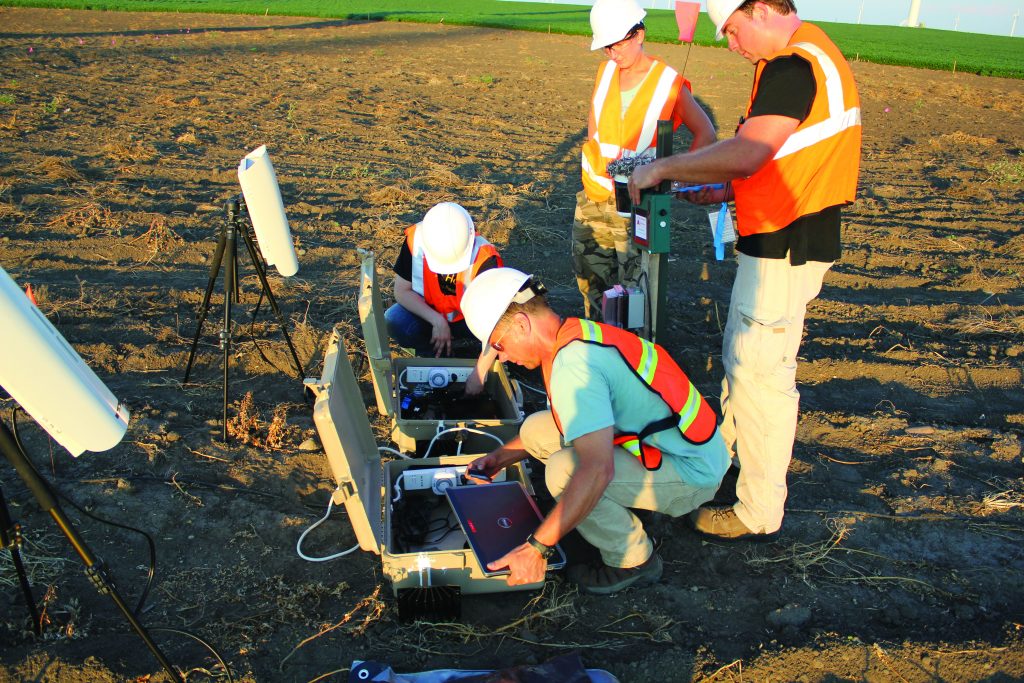
Avoiding turbines
An obvious question many may ask is how a bat could collide with a turbine in the first place since they have echolocation abilities. The short answer is the experts don’t know exactly why bats are active around turbines, according to Peters.
“First of all, it’s important to note that when you see a turbine on the horizon, it looks like it’s moving really slow, but those blades are moving fast, especially at the tips,” she said. “As soon as a bat moves into what we call the rotor swept zone, it’s in danger. They’re not going to be able to detect a blade before they get hit. Unfortunately, they tend to come in, and many sort of hang around the nacelle. They’re in and out and putting themselves in danger multiple times. There are some hypotheses out there that they perceive the towers as a water or foraging source, and they come in, and they’re trying to drink or glean insects off the side of the turbine. That’s why one of the technologies that’s being tested is different kinds of texturized turbine coatings. As you know, bats find their way around and they find drinking and eating opportunities by sonar. The signal that they’re getting back from the turbine monopole may be similar to that of water.”
Some studies with different kinds of texturized coatings have been done by Texas Christian University, according to Peters, but are still in the early stages of development and testing.
“The coatings are designed so that the signal coming back to the bats does not make them think that they’re coming to a water source,” she said. “They actually have video of bats on untreated turbines making contact with the paint, purportedly because they either think it’s water or they think it’s a smooth leaf surface and they’re trying to pull insects off it. When you get into biology and behavior, things get really complex really fast.”
Another area that’s been considered is the lighting on turbines, but it appears that the lights don’t affect bats as much as one might think, according to Peters.
“It would seem to make sense; you would think the lighting attracts insects and then insects attract bats, but it’s mostly red lighting now on top of turbines, and they have not found any relationship between either bat activity or bat fatalities around those lights,” she said. “That’s a good thing.”
Another hypothesis is that bats may be mistaking turbine monopoles for natural structures, according to Peters.
“Bats don’t see very well, but they can see a little bit,” she said. “If they’re looking for trees, which are their habitat, they may misperceive a turbine as a tree because it’s this sort of long tall structure on the horizon. One technology that is being tested by the University of Hawaii and the USGS and others is installing low-level lighting around turbines so that it differentiates it just enough for the bats so that they don’t perceive it as a tree anymore. It may potentially not be as attractive.”
Canada, the U.S., and beyond
Although the study was done for Canada, Peters said much in the document is relevant to the U.S. as well.
“There are things like species maps that are targeted toward Canada, but most of the species we’re talking about, most of the potential effects that we’re talking about, the different kinds of models that are used, those are prevalent in the U.S. as well,” she said. “I think that if we were to create a similar source, a resource for the U.S., there would be changes, and we would focus it more on the regulatory climate, conservation goals, and what regions are going to be expecting different things.”
But Peters said the study also addresses emerging technologies that are being used not just in Canada, but globally.
“A lot of these technologies, things like bat detection systems and automated detection minimization systems or detection deterrent systems, many of these are being developed in the U.S. and Europe but used globally,” she said. “I know that Europe has a lot of concerns about their bats as well, so there’s been research done there, and we’ve incorporated some of that research into the report.”
And that the review has drawn upon so many resources is what makes this study unique, according to Peters.
“There’s so much being done with respect to bats and wind right now, but it’s published all over the place,” she said. “Some of it is published or even unpublished — what we would call the gray literature. What we were able to do is pull pertinent information from all these resources together into one document. We were also able to draw upon DNV GL’s experience. We have over 2,300 renewable energy experts around the world. We have an incredible team of renewables engineers, policy experts, biologists, wind-energy analysts, so we were able to draw upon that. We pulled it all into one place and summarized it in a way that is usable by anyone.”
FOR A COPY OF THE REPORT tinyurl.com/batsandwind

















